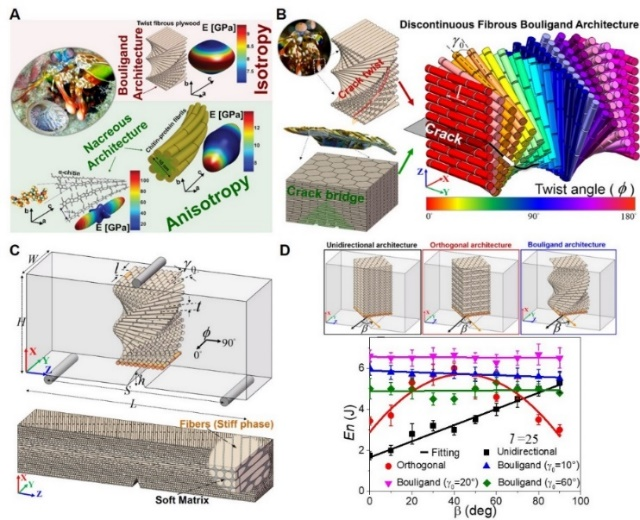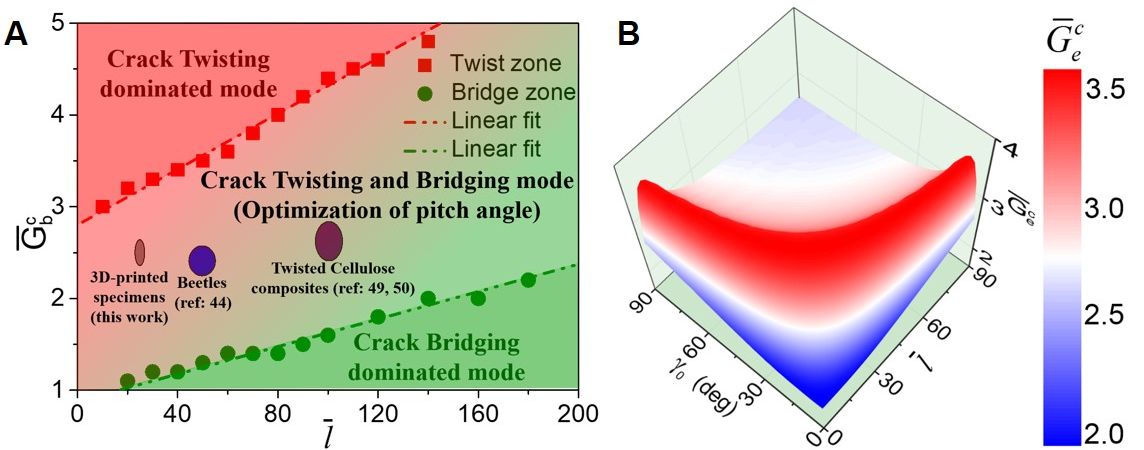The survival war between the “spear” predators and “shield” preys in the biological world has inspired people that changing the microstructure of materials is an important way for structural materials to obtain extraordinary mechanical properties. The “spear” of mantis shrimps with Bouligand-type microstructures and the “shield” of abalone with nacreous staggered architectures are in research interest.
A team led by Prof. Ni Yong and Prof. He Linghui from University of Science and Technology of China (USTC) of the Chinese Academy of Sciences CAS designed a discontinuous fibrous Bouligand (DFB) architecture, a combination of Bouligand and nacreous staggered structures. Systematic bending experiments for 3D-printed single-edge notched specimens with such architecture indicated that total energy dissipations are insensitive to initial crack orientations and showed optimized values at critical pitch angles. The study was published in PNAS with the title of “Discontinuous fibrous Bouligand architecture enabling formidable fracture resistance with crack orientation insensitivity” on June 22nd.
Inspired by the structural arrangements in the exoskeleton of aggressive crustaceans, researchers hypothesized that the structure that exhibits the combination of the toughening mechanisms of crack twisting and crack bridging endows the mantis shrimps with remarkable fracture resistance as well as crack orientation insensitivity. To prove the hypothesis, they designed a DFB architecture with the combination of Bouligand and nacreous staggered structures by 3D printing to examine how the fracture resistance depends on the controlled architectural parameters. Furthermore, they developed a fracture mechanics model to elucidate the mechanism of crack orientation insensitivity and maximum energy dissipations in DFB architecture.

Structural design and mechanical test for DFB composites
The results showed that the sophisticated hybrid fracture mode due to the competition of energy dissipations between crack twisting and crack bridging arising in DFB architecture is identified as the origin of maximum fracture energy at a critical pitch angle. This finding sheds light on how nature evolves materials to exceptional fracture toughness and crack orientation insensitivity. The provided design strategies with parameters selection principle enable the fabrication of formidable fracture-resistant fibrous composite systems that adapt to loads in various orientations.

Optimization design of the DFB composite
This study not only reveals the origin of a microstructure for excellent fracture toughness of biomaterials, but also provides new biomimetic structural design ideas and performance optimization parameter selection principles for the preparation of high-performance advanced composite materials.
Paper link: https://doi.org/10.1073/pnas.2000639117